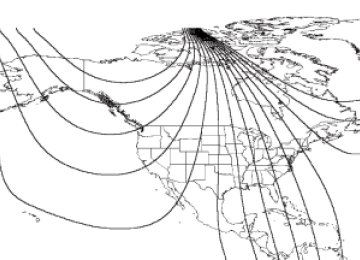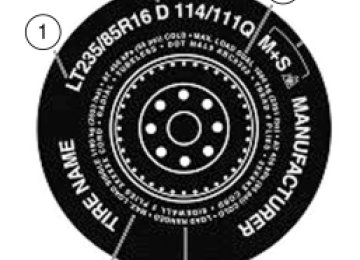- 2001 Ford E 250 Owners Manuals
- Ford E 250 Owners Manuals
- 2003 Ford E 250 Owners Manuals
- Ford E 250 Owners Manuals
- 2012 Ford E 250 Owners Manuals
- Ford E 250 Owners Manuals
- 2002 Ford E 250 Owners Manuals
- Ford E 250 Owners Manuals
- 2006 Ford E 250 Owners Manuals
- Ford E 250 Owners Manuals
- 2009 Ford E 250 Owners Manuals
- Ford E 250 Owners Manuals
- 2007 Ford E 250 Owners Manuals
- Ford E 250 Owners Manuals
- 2010 Ford E 250 Owners Manuals
- Ford E 250 Owners Manuals
- 2004 Ford E 250 Owners Manuals
- Ford E 250 Owners Manuals
- 2008 Ford E 250 Owners Manuals
- Ford E 250 Owners Manuals
- 2011 Ford E 250 Owners Manuals
- Ford E 250 Owners Manuals
- 2005 Ford E 250 Owners Manuals
- Ford E 250 Owners Manuals
- Download PDF Manual
-
been turned off. Pressing the brake pedal after the engine has been turned off will give a false power steering fluid level reading.
5. Recheck the fluid level on the dipstick. Do not add fluid if the level is between the arrows in the FULL COLD range.
299
2010 Econoline (eco) Owners Guide, 3rd Printing USA (fus)
Maintenance and Specifications
6. If the fluid is low, add fluid in small amounts, continuously checking the level until it reaches the FULL COLD range. Be sure to put the dipstick back in the reservoir. Refer to Maintenance product specifications and capacities in this chapter for the proper fluid type.
BRAKE FLUID • E-150/E-250/E-350 Single Rear
Wheel
• E-350/E-450 Dual Rear Wheel
The fluid level will drop slowly as the brakes wear, and will rise when the brake components are replaced. Fluid levels between the MIN and MAX lines are within the normal operating range; there is no need to add fluid. If the fluid levels are outside of the normal operating range, the performance of the system could be compromised; seek service from your authorized dealer immediately.
DRIVELINE UNIVERSAL JOINT AND SLIP YOKE Your vehicle may be equipped with universal joints that require lubrication. Refer to the scheduled maintenance information for maintenance intervals. If the original universal joints are replaced with universal joints equipped with grease fittings, lubrication will also be necessary. 300
2010 Econoline (eco) Owners Guide, 3rd Printing USA (fus)
Maintenance and Specifications
TRANSMISSION FLUID
Checking automatic transmission fluid (if equipped) Refer to your scheduled maintenance information for scheduled intervals for fluid checks and changes. Your transmission does not consume fluid. However, the fluid level should be checked if the transmission is not working properly, i.e., if the transmission slips or shifts slowly or if you notice some sign of fluid leakage. Automatic transmission fluid expands when warmed. To obtain an accurate fluid check, drive the vehicle until it is at normal operating temperature (approximately 20 miles [30 km]). If your vehicle has been operated for an extended period at high speeds, in city traffic during hot weather or pulling a trailer, the vehicle should be turned off for about 30 minutes to allow fluid to cool before checking. 1. Drive the vehicle 20 miles (30 km) or until it reaches normal operating temperature. 2. Park the vehicle on a level surface and engage the parking brake. 3. With the parking brake engaged and your foot on the brake pedal, start the engine and move the gearshift lever through all of the gear ranges. Allow sufficient time for each gear to engage. 4. Latch the gearshift lever in P (Park) and leave the engine running. 5. Remove the dipstick, wiping it clean with a clean, dry lint free rag. If necessary, refer to Identifying components in the engine compartment in this chapter for the location of the dipstick. 6. Install the dipstick making sure it is fully seated in the filler tube. 7. Remove the dipstick and inspect the fluid level. The fluid should be in the designated area for normal operating temperature or ambient temperature.
301
2010 Econoline (eco) Owners Guide, 3rd Printing USA (fus)
Maintenance and Specifications
Low fluid level Do not drive the vehicle if the fluid level is at the bottom of the dipstick and the ambient temperature is above 50°F (10°C).
ADD
COLD
HOT
DO NOT ADD
Correct fluid level The transmission fluid should be checked at normal operating temperature 150°F-170°F (66°C-77°C) on a level surface. The normal operating temperature can be reached after approximately 20 miles (30 km) of driving. You can check the fluid without driving if the ambient temperature is above 50°F (10°C). However, if fluid is added at this time, an overfill condition could result when the vehicle reaches normal operating temperature.
302
2010 Econoline (eco) Owners Guide, 3rd Printing USA (fus)
Maintenance and Specifications
ADD
COLD
HOT
DO NOT ADD
The transmission fluid should be in this range if at normal operating temperature (150°F-170°F [66°C-77°C]).
DON'T ADD IF IN CROSSHATCHED AREA (cid:129) CHECK WHEN HOT
IDLING IN PARK
ADD
COLD
HOT
DO NOT ADD
The transmission fluid should be in this range if at ambient temperature (50°F-95°F [10°C-35°C]).
303
2010 Econoline (eco) Owners Guide, 3rd Printing USA (fus)
Maintenance and Specifications
High fluid level
DON'T ADD IF IN CROSSHATCHED AREA (cid:129) CHECK WHEN HOT
IDLING IN PARK
ADD
COLD
HOT
DO NOT ADD
Fluid levels above the safe range may result in transmission failure. An overfill condition of transmission fluid may cause shift and/or engagement concerns and/or possible damage. High fluid levels can be caused by an overheating condition. Adjusting automatic transmission fluid levels Before adding any fluid, make sure the correct type is used. The type of fluid used is normally indicated on the dipstick. Refer to Maintenance product specifications and capacities in this chapter. Use of a non-approved automatic transmission fluid may cause internal transmission component damage. If necessary, add fluid in 1/2 pint (250 ml) increments through the filler tube until the level is correct.
304
2010 Econoline (eco) Owners Guide, 3rd Printing USA (fus)
Maintenance and Specifications
DON'T ADD IF IN CROSSHATCHED AREA (cid:129) CHECK WHEN HOT
IDLING IN PARK
ADD
COLD
HOT
DO NOT ADD
If an overfill occurs, excess fluid should be removed by an authorized dealer. An overfill condition of transmission fluid may cause shift and/or engagement concerns and/or possible damage. Do not use supplemental transmission fluid additives, treatments or cleaning agents. The use of these materials may affect transmission operation and result in damage to internal transmission components.
305
2010 Econoline (eco) Owners Guide, 3rd Printing USA (fus)
Maintenance and Specifications
Automatic transmission fluid filter The Torqshift automatic transmission is equipped with a serviceable transmission fluid filter located inside the transmission bottom pan. Refer to scheduled maintenance information for service intervals for automatic transmission fluid and transmission filter. For transmission filter maintenance, see your authorized dealer.
AIR FILTER Refer to scheduled maintenance information for the appropriate intervals for changing the air filter element. When changing the air filter element, use only the air filter element listed. Refer to Motorcraft威 part numbers in this chapter.
WARNING: To reduce the risk of vehicle damage and/or personal burn injuries do not start your engine with the air
cleaner removed and do not remove it while the engine is running.
306
2010 Econoline (eco) Owners Guide, 3rd Printing USA (fus)
Maintenance and Specifications
Changing the air filter element 1. Disconnect the fresh air inlet tube from the radiator support. 2. Open the clamp that secures the two halves of the air filter housing together.
3. Carefully separate the two halves of the air filter housing. 4. Remove the air filter element from the housing.
5. Install a new air filter element. Be careful not to crimp the filter element edges between the air filter housing. This could cause filter damage and allow unfiltered air to enter the engine if not properly seated. 6. Replace the two halves of the air filter housing and secure the clamp. 7. Connect the fresh air inlet tube to the radiator support. Note: Failure to use the correct air filter element may result in severe engine damage. The customer warranty may be void for any damage to the engine if the correct air filter element is not used.
307
2010 Econoline (eco) Owners Guide, 3rd Printing USA (fus)
Maintenance and Specifications
MOTORCRAFT PART NUMBERS
Component*
4.6L V8 engine 5.4L V8 engine
Air filter element
FA-1632
FA-1632
6.8L V10
engine FA-1632Battery- standard / (auxiliary) Oil filter
Spark plugs
Torqshift automatic
transmission
internal
bottom–pan
filter2
BXT-65-650 / (BXT-65-750)
BXT-65-650 / (BXT-65-750)
BXT-65-650 / (BXT-65-750)
FL-820-S
FL-820-S
FL-820-S
—
FT-180
FT-180
*Refer to the 6.0 and 6.4 Liter Power Stroke Direct Injection Turbo Diesel Owner’s Guide Supplement for Motorcraft威 diesel engine service part numbers. 1For spark plug replacement, see your authorized dealer. Refer to scheduled maintenance information for the appropriate intervals for changing the spark plugs. Replace the spark plugs with ones that meet Ford material and design specifications for your vehicle, such as Motorcraft威 or equivalent replacement parts. The customer warranty may be void for any damage to the engine if such spark plugs are not used. 2Also available with 6.0L diesel engine/TorqShift transmission.
308
2010 Econoline (eco) Owners Guide, 3rd Printing USA (fus)
Maintenance and Specifications
威
威
威
威
—
—
—
’
309
2010 Econoline (eco) Owners Guide, 3rd Printing USA (fus)
Maintenance and Specifications
• • •
•
威
威 •
威 •
威 •
威 •
—
’
威
威
威
威
威
威
威
威
威

